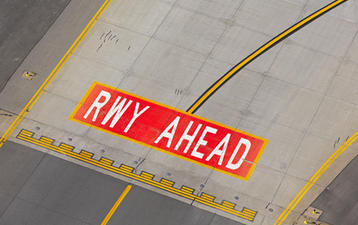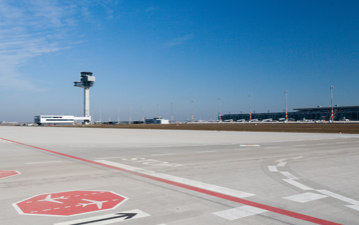Aeronautical Study of service drive in pre-threshold area of a runway
At a large international European airport, a service road linking apron and supply areas crosses the secondary runway at the threshold. To avoid long waiting times and operational limitations, a new service drive is proposed in the pre-threshold area of the runway. The objective is to allow vehicles to drive around the threshold independently for a major fraction of aircraft operations on the runway.
Designing a service road in a pre-threshold area is a challenging task as it requires fulfilling numerous restrictive infrastructural and operational requirements. Therefore, airsight was commissioned by the airport operator to carry out an aeronautical study, assessing the feasibility of the concept.
The study was conducted in compliance with international regulations of ICAO and EASA. Based on the concept and its relevant processes, hazards have been identified and associated risk as well as their potential impact on operations have been analysed, focussing in particular on jet blast and RESA related issues. Where required, mitigation measures have been proposed.
In order to partially allow independent operations of the service drive and runway, a “dynamic Obstacle Limitation Surfaces” (OLS) concept has been developed. Instead of being “static” and based on the most critical aircraft, dynamic OLS are based on the size of the aircraft operating on the runway. This approach enables a more flexible and less constrained utilisation of the service drive, as the affected runway is operated mainly by small aircraft.
The aeronautical study enabled to demonstrate that with the help of such a concept, in conjunction with new ATC procedures and associated mitigating measures, the service drive can be operated safely while minimising the impact on airport capacity.
airsight is one of the world’s leading consultants for aerodrome and air-traffic-management related Safety Assessments and Aeronautical Studies, conducting site-specific studies all over the world and assisting airports to develop their infrastructure, manage compliance and optimise capacity while ensuring the necessary level of safety.
Key Facts



